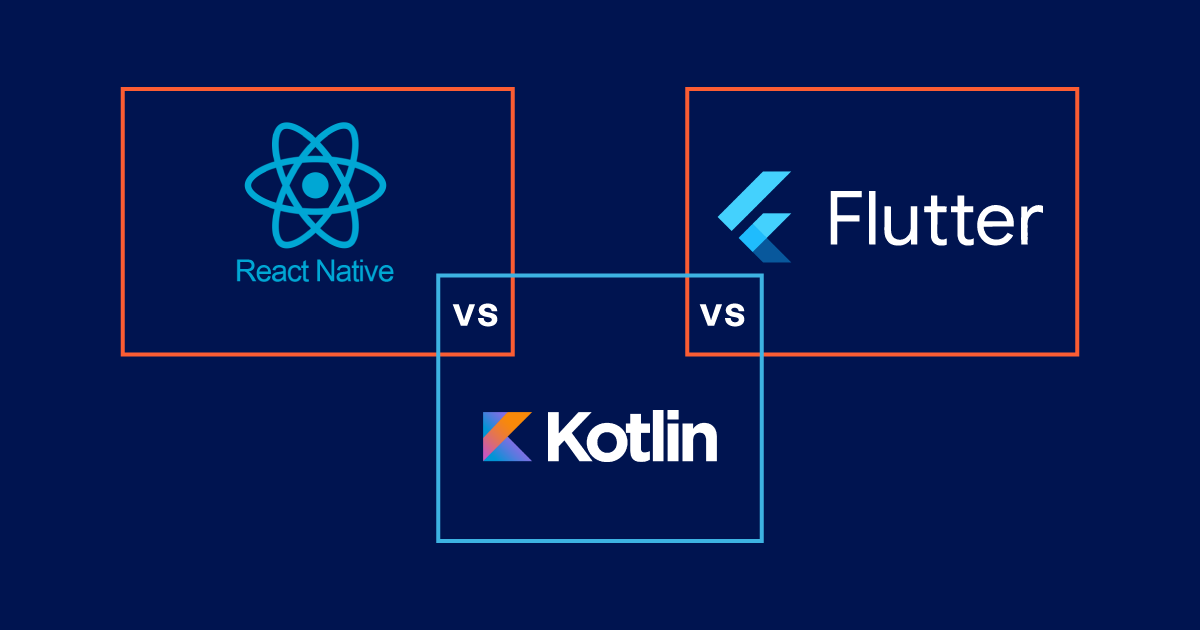In the world of mobile app development, there are several frameworks available that allow developers to build cross-platform applications efficiently. Kotlin Multiplatform Mobile (KMM), Flutter, and React Native are three popular choices among developers. In this blog post, we will explore the differences between these frameworks, their advantages, and their use cases.
Kotlin Multiplatform Mobile (KMM)
Kotlin Multiplatform Mobile (KMM) is a framework developed by JetBrains, the creators of Kotlin. KMM allows developers to write shared business logic in Kotlin and share it across multiple platforms, including Android and iOS. KMM provides a seamless integration with native platform APIs, allowing developers to access platform-specific features when needed.
// Kotlin Multiplatform Mobile (KMM) code sample
expect class PlatformSpecificClass() {
fun platformSpecificMethod(): String
}
class SharedClass {
fun sharedMethod(): String {
val platformSpecificClass = PlatformSpecificClass()
return platformSpecificClass.platformSpecificMethod()
}
}
KMM is a great choice for projects that require deep integration with platform-specific APIs and libraries. It provides a high level of flexibility and performance since the code is written in Kotlin, a statically typed language known for its concise syntax and null safety.
Flutter
Flutter is an open-source UI toolkit developed by Google. It allows developers to build beautiful and high-performance applications for multiple platforms using a single codebase. Flutter uses the Dart programming language and provides a rich set of pre-built widgets for creating interactive user interfaces.
// Flutter code sample
class MyApp extends StatelessWidget {
@override
Widget build(BuildContext context) {
return MaterialApp(
title: 'My Flutter App',
home: Scaffold(
appBar: AppBar(
title: Text('Welcome to Flutter'),
),
body: Center(
child: Text('Hello, World!'),
),
),
);
}
}
Flutter is known for its hot reload feature, which allows developers to see the changes in the app's UI immediately during the development process. It offers a consistent UI experience across platforms and provides excellent performance since it renders UI components using Skia, a powerful 2D rendering engine.
React Native
React Native is a framework developed by Facebook that enables developers to build mobile applications using JavaScript and React. It allows developers to write code once and deploy it on multiple platforms, including Android and iOS. React Native uses native components, allowing developers to create highly responsive and performant applications.
// React Native code sample
import React from 'react';
import { Text, View } from 'react-native';
const App = () => {
return (
<View>
<Text>Welcome to React Native!</Text>
</View>
);
};
export default App;
React Native provides a large ecosystem of third-party libraries and components, making it easy to add new features to your app. It also offers a hot reload feature, similar to Flutter, which speeds up the development process and reduces iteration time.
Key Differences
- Programming Languages: KMM uses Kotlin, Flutter uses Dart, and React Native uses JavaScript.
- UI Development: KMM relies on the platform's native UI frameworks, while Flutter and React Native have their own UI rendering engines and widget libraries.
- Performance: KMM and Flutter provide excellent performance since they compile to native code. React Native, although performant, can experience performance issues in complex scenarios due to its JavaScript bridge.
- Integration with Native APIs: KMM offers seamless integration with native APIs, allowing developers to leverage platform-specific features. Flutter and React Native also provide access to native APIs but may require additional setup or third
-party libraries for advanced integrations.
5. Tooling and Ecosystem: Flutter and React Native have a larger and more mature ecosystem compared to KMM, with a wide range of plugins, libraries, and community support available.
Conclusion
Choosing the right framework for your cross-platform mobile app development depends on various factors such as project requirements, performance needs, and familiarity with programming languages. KMM is a great choice for Kotlin developers who require deep integration with platform-specific APIs. Flutter provides a rich set of pre-built UI components and excellent performance. React Native offers a large ecosystem and the ability to reuse existing web development skills. Evaluate these frameworks based on your project needs to make an informed decision and build amazing cross-platform mobile applications.
